Augmented Reality (AR) is upending the traditional way we buy clothing and what we choose to wear. However, the shift to a more digital based consumer experience and the wider adoption of technologies, such as AI avatars and virtual try-ons, has been a challenging one for the fashion industry.
Traditionally reliant on physical stores and in-person shopping outings, fashion now has had to adjust to a world where digital interactions dominate. AR helps bridge the gap between the traditional retail experience and the digital one. Its use demonstrably boosts sales and engagement. 61% of shoppers prefer going to retailers who provide an augmented reality experience and 72% of luxury fashion consumers say it’s important that brands provide AR experiences as part of the shopping experience.
The need for an AR/VR strategy is critical to the success of any innovative fashion company, and in this article we’ll see how AR’s role in fashion is growing.
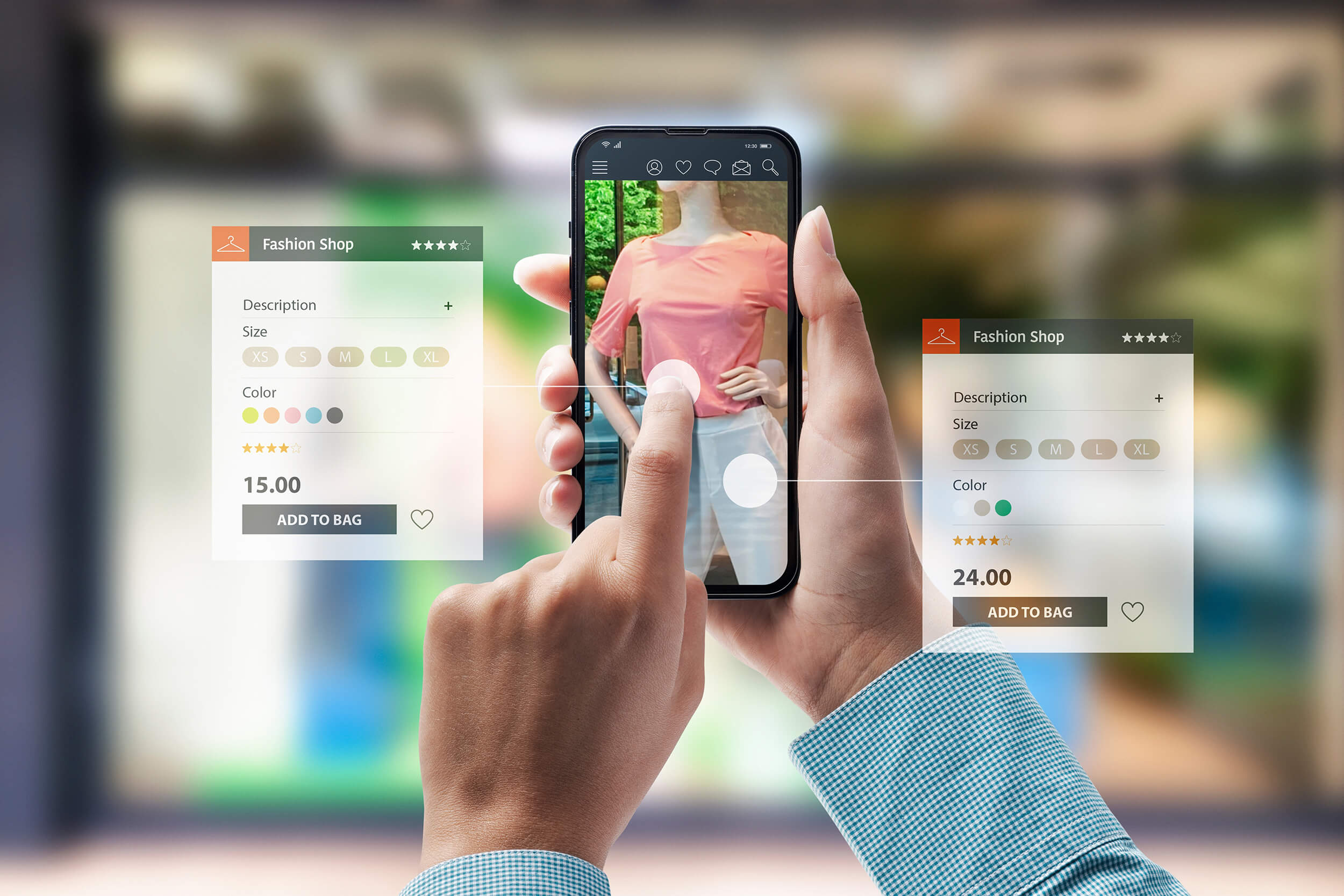
Key Takeaways:
- AR enhances brand awareness, improves sales and reduces returns. Technologies such as virtual try-ons and interactive catalogs significantly increase customer engagement.
- Conversion rates are much higher with AR retail experiences compared to those without. Integrating an AR experience into the customer journey can boost conversion rates as much as 200%.
- Leveraging AR for innovative experiences, such as virtual fashion shows and interactive storefronts, boosts engagement and drives viral marketing on social media.
- Combining AR with AI allows for highly personalized shopping experiences, improving customer satisfaction and repeat purchase rate by 35%.
- AR and 3D technology enable designers to visualize and modify products digitally, speeding up the design process and lowering costs.
Let’s chat
Not sure where to start? Book a free strategy call with us to get started! No strings attached.
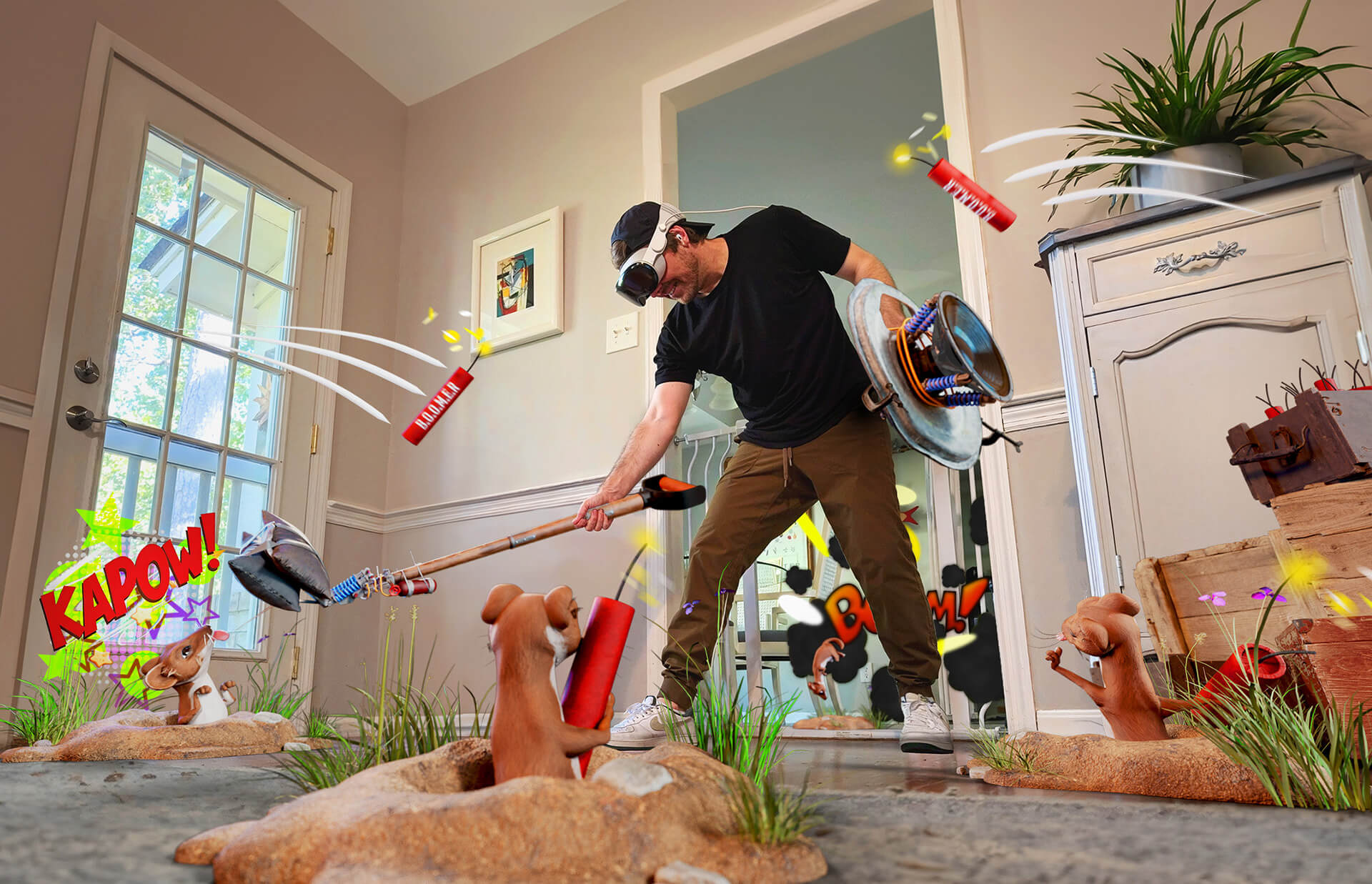
How is AR Changing the Fashion Industry?
In short, Augmented Reality is the overlaying of digital elements onto the physical world. In a fashion context, this means allowing a user to see how they might look with a certain item of clothing or accessory using a mobile phone or AR glasses from the comfort of their own home.
The AR market is forecast to reach $598 billion by 2030, up from $57 billion in 2023, so capitalizing on the AR trend early will create huge rewards for the companies that do.
Clothing in the virtual world isn’t limited by the same constraints it faces in the physical one. The opportunities for self expression are far greater and virtual clothing can be seamlessly integrated into digital spaces, from virtual reality environments to social media avatars.
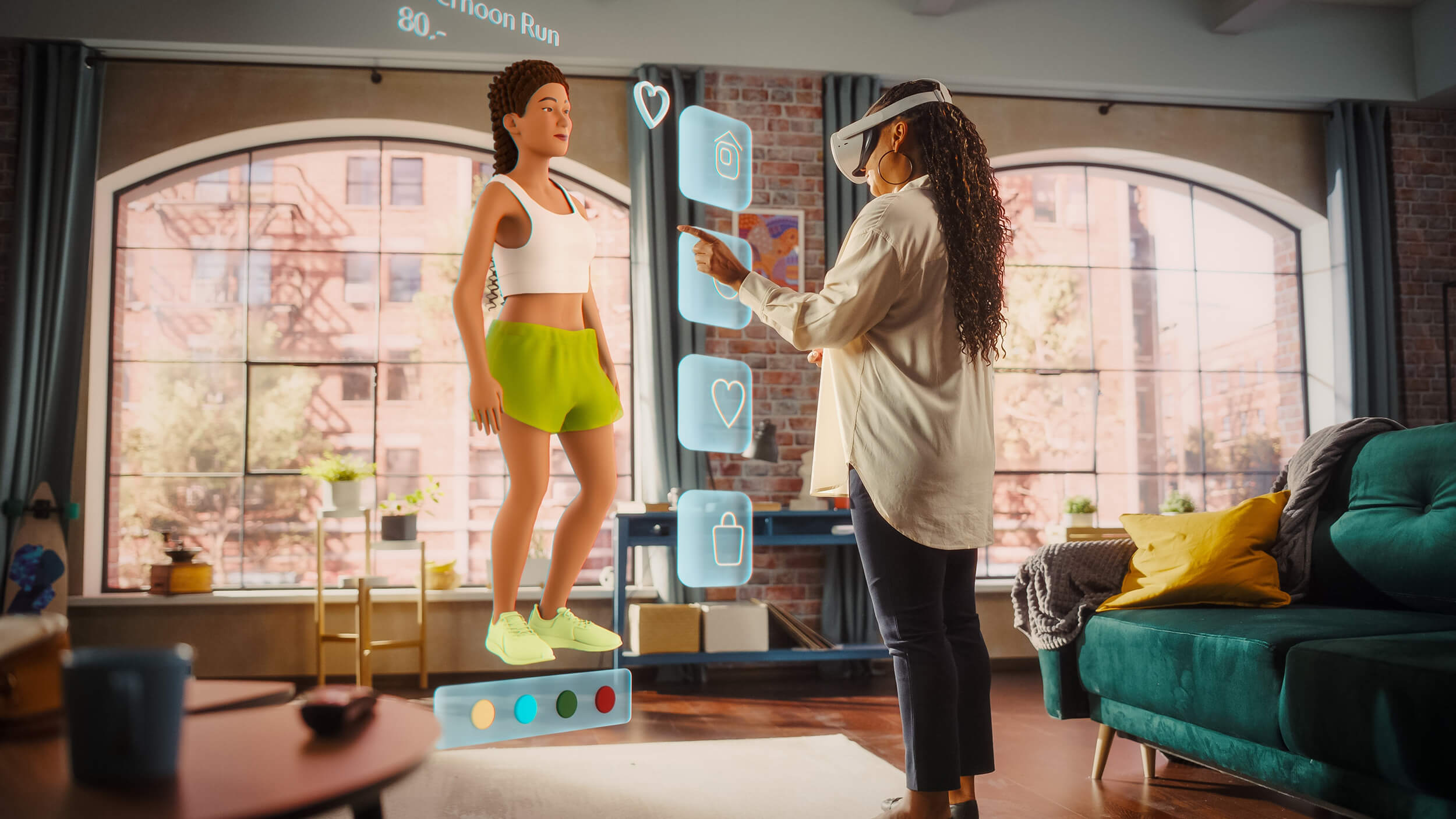
As we’ll see throughout this article, AR can be used across the fashion industry for:
- Artificial Intelligence Avatars
- Virtual Try On
- AR Fitting Rooms
- Highly Customizable Products
- Interactive Catalogs
- AR Fashion Shows
- Product Information
- AR Wardrobe
- AR Storefronts
Keep up to date
Sign up to our newsletter for exclusive updates and content, delivered directly to your inbox.
What are the Benefits of Using Augmented Reality in Fashion?
81% of Gen Z and Millennials expect AR to improve their shopping experience in the future, and with the spending power of these demographics growing every year, the opportunity for companies that create a seamless online shopping experience is greater than ever.
Understandably, navigating the shift from the physical store to the digital one has been challenging for many companies. So how can AR help?
AR in Fashion to Improve Sales and Reduce Returns
Allowing customers to virtually try on clothing before making a purchase makes it much more likely that the clothes match their preferences and fit correctly. By creating more informed customer decisions and lower return rates, AR can help stores cut down on return-related expenses.
Deepgears, a company that creates virtual fitting rooms, has found that brands using its technology see a 25% decrease in return rates and a 28% increase in sales on items that offer virtual try-on options. Likewise, when John Lewis began using virtual try on technology, it saw a 10% reduction in online returns and a 38% increase in sales. Impressive stats indeed!
Simply Wardrobes, a New Zealand based wardrobe company, created a mobile AR experience giving customers the chance to view a virtual wardrobe superimposed over the space in their house. The experience increased revenue by 77% in the first month alone and increased web traffic by 18% during its first three months.
It’s also known that AR helps improve conversion rates. A recent Snapchat and Ipsos report found that interacting with products that have an AR experience built-in boosts conversion rates by 94%. Shopify has also found that merchants who use AR in their ecommerce stores, increase their conversion rates by 94% on average.
The massive improvement in the customer experience that AR provides in each step of their journey, clearly improves conversions and enhances the overall customer experience. Many companies are already using AR to supercharge their fashion sales, conversions and reduce returns.
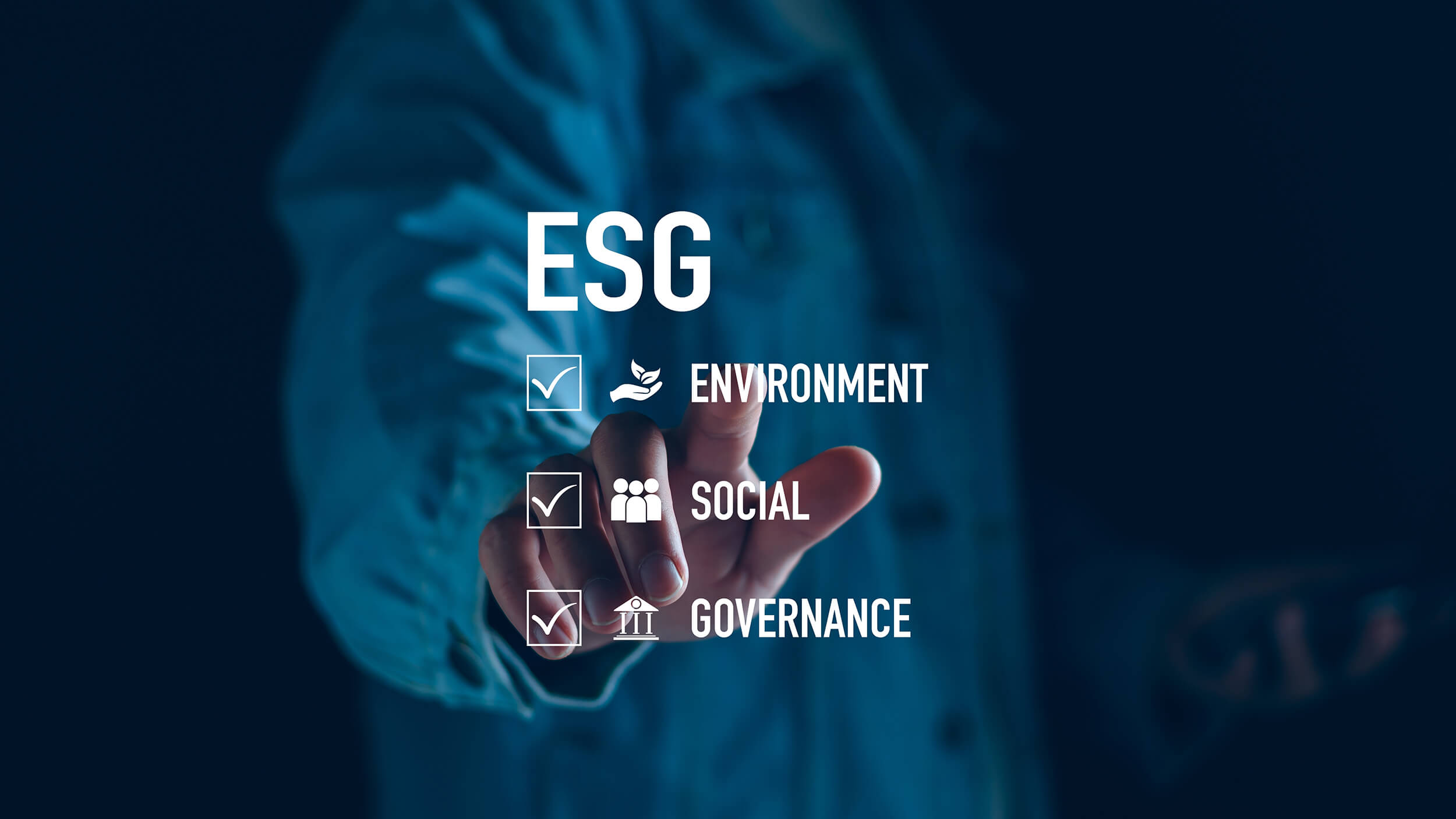
Using AR to Improve ESG Ratings in Fashion
Environmental, Social and Governance (ESG) is a growing trend that consumers, investors and companies are paying ever more attention to. Unfortunately, the fast fashion trend (the process of creating low-quality apparel to meet current and short term trends), is growing and is projected to reach $180 billion by 2030, up from just $60.5 billion in 2022. It leads to significant environmental damage and waste and relies on low-wage labor in poor working conditions.
If customers can try on clothing virtually before they buy it, it would reduce the fast fashion trend. Information about the origin of the product and its manufacturer could even be overlaid onto the experience to give the customer a sense of how ESG credentials stack up against what they want. Creating experiences like this boosts consumer trust and enhances brand integrity.
How Can AR Boost Customer Engagement in Fashion?
It’s been proven that AR is more effective than traditional forms of marketing when it comes to boosting brand interaction. On social media, the opportunity for companies to improve customer engagement and create viral content in a virtual world rather than a physical one are huge. Snapchat has found that marketing campaigns that include AR drive 5X more attention compared to standard campaigns, and another study by Ipsos found that 80% of brands that use AR say it helps in driving sales and improving brand awareness.
AR can create a much more enriching experience for the user whilst improving brand activations and sales for the company using it. 71% of customers say that they shop more when the product has some sort of AR experience available and 40% are happy to pay more for AR configured and customizable products. So, for those companies willing to invest, creating an AR experience can be a gamechanger. By offering more immersive and interactive shopping, a company will captivate customers, boost their satisfaction, and set the brand apart from the competition.
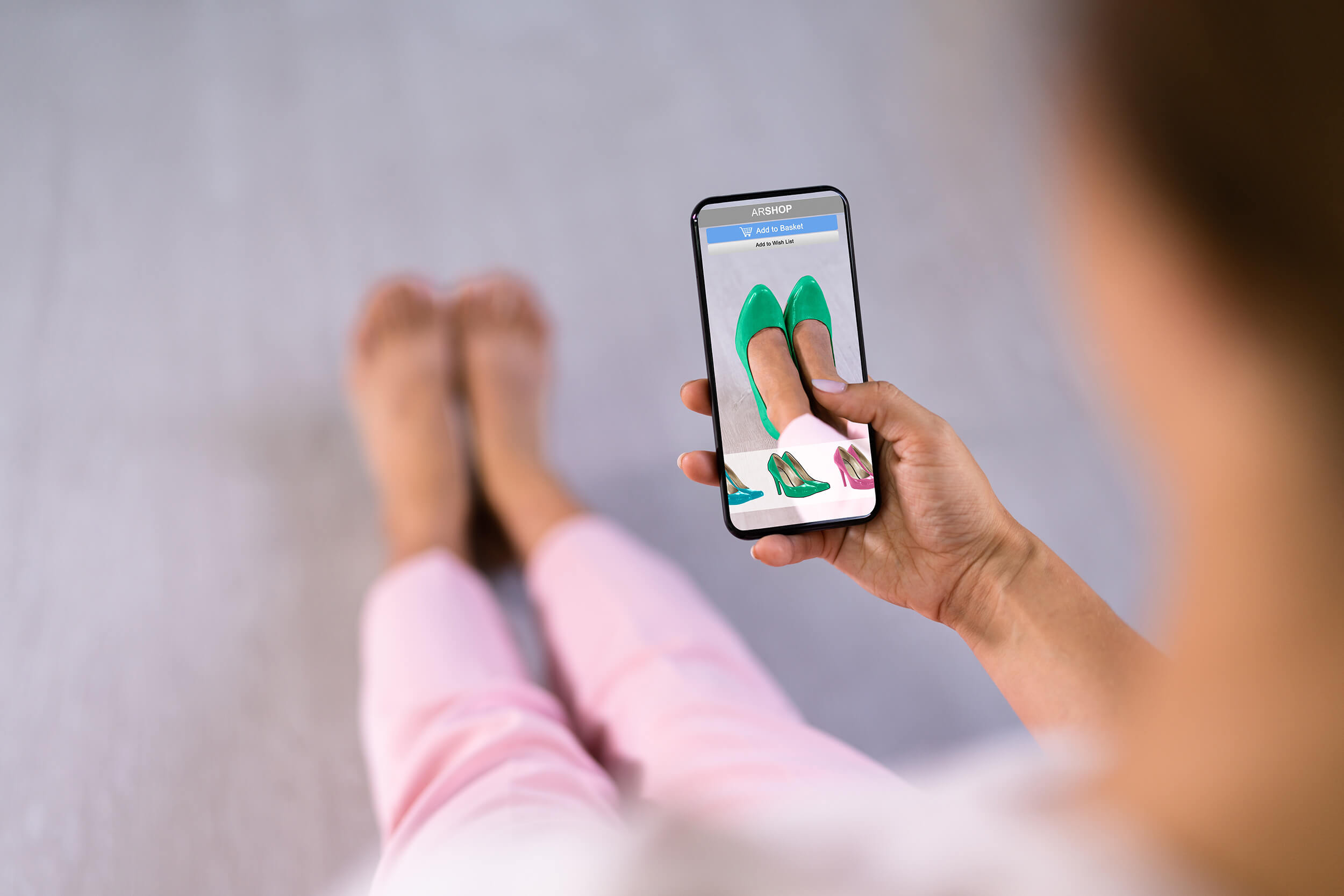
How Can Augmented Reality be Used in Fashion?
Now let’s see some examples of how AR is being used in fashion.
Virtual Try On in Fashion
Virtual try on is a technology that allows users to see how a product would look on them before they buy it using AR. Although it’s fairly new, 92% of Gen Z say they’re interested in using it. AR also means that the fitting room can be brought to the customer with virtual fitting rooms that allow them to see how clothes look on their body via their smartphone or tablet. There are plenty of examples of companies using virtual try on fashion, just two being Saks Fifth’s virtual AR shopping experience and Zara’s AR app.
Saks Fifth
We worked with luxury fashion company, Saks Fifth, to create an Augmented Reality shopping experience. Shoppers could try on virtual clothing using a smartphone or glasses either in a store or from the comfort of their own home. They could pick items, get recommendations and access information about the clothes. The app greatly improved the shopping experience, increased revenue per customer and reduced returns.
Zara’s AR App
Zara is yet another business looking to capitalize on the benefits AR can offer. The luxury fashion brand first started using AR in 2018. In their initial AR venture, customers could download Zara’s AR app, scan a sign and virtually try on makeup, clothes, or even use it for in-store navigation. They could then purchase the accessories either on the app itself or in-store. After the success of this experience, Zara has been adding more AR experiences to its stores around the world and now even offers virtual in-store navigation in some of them.
Augmented Reality Fashion Shows
Imagine being able to bring models into a home and showcase the garments in real-time. With AR, you can do just that. AR helps give potential buyers a clearer view of the products compared to static photos, allowing them to see how the clothes fit, move, and look from all angles, which typically leads to higher customer satisfaction and fewer returns. They also help a brand’s ESG credentials by reducing the need for physical events and garment production.
Balenciaga
Balenciaga partnered with Apple to create an app for the Vision Pro headset. The partnership promises to create a whole new sort of fashion show. Users will witness the Balenciaga Spring 2025 collection through Apple’sXR headset, showcasing the garments in a context that amplifies their detail and artistry.
There’s also an interactive lookbook and a chance to view the collection that, according to Balenciaga, will give people “the opportunity to see Balenciaga creations in a virtual space that echoes the detail and artistry of the brand’s physical garments.”
How Can Artificial Intelligence Be Used in Fashion?
The applications of AI in fashion are already huge and with companies like Google, Meta and Amazon investing billions of dollars into the technology, they’re only going to grow. Companies like StichFix are using generative AI to interpret customer feedback faster and create more personalized styles for them based on the feedback.
“While still nascent, AI has the potential to help fashion businesses become more productive, get to market faster, and serve customers better. The time to explore the technology is now.” – McKinsey & Company
How do you think these innovations will disrupt the fashion industry? Here, we’ll take a look.
AI Avatars in Fashion
The popularity and ability to create AI avatars has exploded since the generative AI boom and release of ChatGPT at the end of 2022. AI avatars allow a company to greatly enhance brand interactions and engagement. They’re already extremely popular in the world of content creation and their potential is immense in fashion too.
Although it might seem a bit sci-fi, artificial intelligence avatars have already been used on the cover of Vogue and play a big role in influencer marketing. AI avatar firm, Lalaland, claims that creating an AI avatar model is 90% faster than creating one via a photoshoot and requires zero physical samples, reducing waste and saving time for the companies (or individuals) that use them.
They also have huge potential for personalization and can be tailored to the tastes of the audiences or changes in algorithms of different social media platforms, offering much greater opportunities for going viral.
Rock Paper Reality and Chronic Cellars AI Avatar
We worked with Chronic Cellars to create an AI sommelier that improved the buyer experience and provided detailed information on the company’s products. The experience created positive sentiment towards the brand and greatly boosted engagement, with users interacting with the sommelier an average of five times per visit.
The project positioned Chronic Cellars as cutting-edge and bold, helping it appeal to a younger audience whilst maintaining its competitive edge.
Tommy Hilfiger’s AI Avatar Fashion Game
Iconic American designer, Tommy Hilfiger, created an AI based fashion game. Known as FashionVerse targeted at Gen Z and Millennial consumers, the mobile game will allow players to style life-like avatars with realistic 3D outfits. Gamification elements, such as style competitions and challenges to win rewards, are included in the game.
Hilfiger believes that improvements in AI technology have reached a point such that AI avatars can now be made very close to lifelike and created to represent a wide range of demographics.
He says that the game’s reception from within the fashion industry has been mixed but that “people who are innovative and who are out in front of the curve embracing the culture and creating great creative marketing content really get it.”
Combining AI and Augmented Reality in Fashion
Combining AI avatars and AR, a customer could try on entirely different combinations of clothes/accessories whilst sitting in their living room and order the ones they want directly.
AI and AR also offer the opportunity to create a much more immersive experience than using either of the two technologies on their own. AI can analyze and interpret user interactions and the environmental context in real time, allowing an AR system to adapt and personalize the content dynamically.
AI and AR together offer a high level of personalization, from accurate virtual fittings to real-time customization, allowing customers to make more informed purchasing decisions and creating a more engaging customer experience.
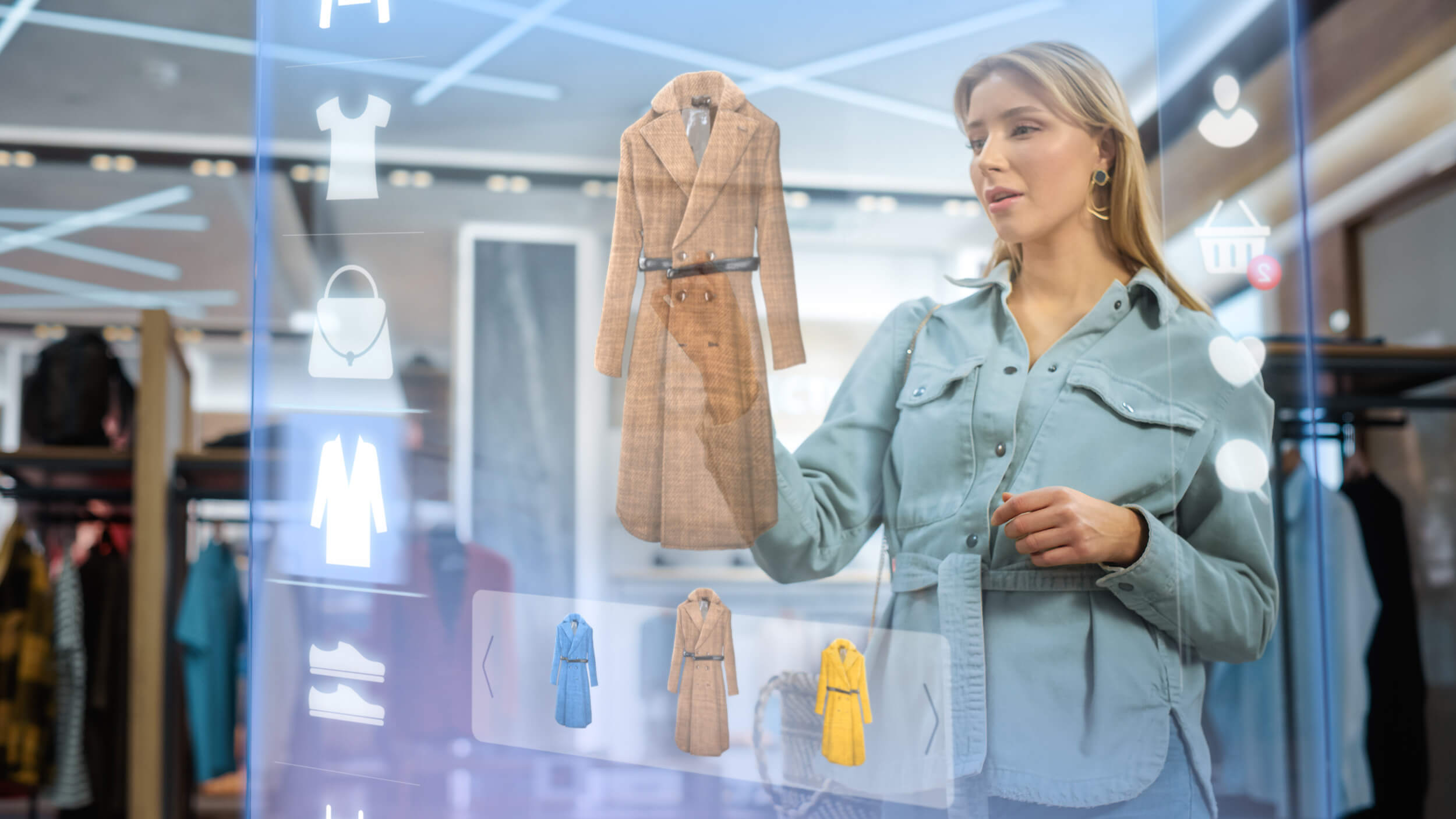
Use of 3D in Fashion
The use of 3D technology in fashion has transformed brand-customer interactions. With 3D models, AR, and virtual try-on, customers can see products in a virtual form before they buy them, helping them make informed purchasing decisions.
3D technology is a great storytelling tool, allowing brands to communicate their narratives in a more engaging way. Demand for 3D imagery is growing too as brands look to use it more and more in their marketing or on their websites. We worked with LVMH to scale 3D capabilities across the Maisons.
3D Assets to Enhance Design
Software like Clo3D allows designers to create highly realistic 3D clothing so they can see exactly how it will look before spending the time and money to make it. It allows designers to quickly modify their creations and removes the need for physical samples, improving on efficiency and lowering the time it takes to get a design onto the market.
“Rock Paper Reality continues to push boundaries for 3D technologies. Customers have seen more retail sales, increased visits from event attendees, and greater fundraising engagement.” – Adobe
Demand for 3D imagery is also growing fast as fashion brands rush to expand into the virtual world, putting their products into video games or building experiences for mixed-reality headsets.
3D Assets in Fashion with Jacquemus
The French fashion brand Jacquemus, known for its unique style and playful online marketing, has become a favorite among fashion enthusiasts. In April 2023, the brand went viral on Instagram and TikTok with a video showcasing an enormous version of their iconic Bambino bag speeding through the streets of Paris. The video used cutting-edge 3D technology to create a convincing CGI version of the bag, bringing in over 2 million likes on Instagram and over 15 million views on TikTok.
This creative stunt not only generated buzz and conversations online but also cleverly addressed previous criticisms of their micro bags, often deemed impractical by influencers. By embracing the discussion and presenting exaggerated versions of their popular products, Jacquemus highlighted its sense of humor and continued commitment to innovative design and marketing.
Choose the Right Augmented Reality Fashion Partner
Most retailers say they’re not prepared to integrate AR into their retail, yet 61% of consumers say they prefer retailers with AR experiences. This disconnect combined with the growth of events like Digital Fashion Week (and now even Metaverse Fashion Week) makes it more important than ever for a fashion brand to have a presence in the AR/VR world.
Despite the growing importance of the space, 52% of retail industry leaders say that one of the key barriers for digital product creation is the lack of digitally trained talent to develop digital assets. At Rock Paper Reality we specialize in bridging this gap by providing digital product development services.
We’ve been at the forefront of AR development for over 12 years and have worked with companies like Google, Amazon, Adobe to create incredibly immersive AR experiences. Our team of experts excels in creating and managing digital assets and ensuring your fashion business stays ahead in the digital space.
If you’re curious about how AR can elevate your business, connect with us to explore the possibilities.
FAQs About AR in Fashion
What is the difference between AR and VR in the fashion industry?
AR allows a user to see how clothes or accessories look on them in real-time whilst the physical world around them remains the same (e.g. – a virtual fitting room). VR means the entire world will be digital and can change along with their avatar and clothing (e.g. – a fully immersive and digital fashion show).
How can I make AR clothing?
To put it briefly, you’ll first need to conceptualize the design and then speak to a first rate digital product experience team to create the 3D assets needed. The team can then help you develop the content and build the experience itself. Testing and further improvements will then need to be made. This is where we can help you build the AR experience you want.
What is the fashion metaverse?
The fashion metaverse refers to the virtual worlds where brands and designers can create their digital clothing and accessories. The items can be worn and showcased in the metaverse. Popular fashion events held in the metaverse include Decentraland’s Metaverse Fashion Week and Gucci’s Vault Land event in The Sandbox.
How does Zara use Augmented Reality?
Zara created an experience using its AR app which, when pointed at the right signs, made two of its models start walking around and speaking in Zara’s SS18 Studio Collection. All of the clothes could be purchased through the app itself as well as in store. It’s since expanded its use of AR to its stores around the world.
What is the future of AR in fashion?
As computing power and investment in the space grows, it’s likely that AR and AI will become more intertwined along with the physical and digital worlds. In the virtual world, clothes could update in real time based on current fashion trends or even on how you’re feeling. Fashion shows will likely become bigger and viewers could explore collections, attend runway shows and even design their own clothing in real time at the show.
Article Sources
- https://kalypso.com/files/docs/2023-DPC-in-Retail-Research.pdf
- https://surveysparrow.com/blog/augmented-reality-customer-experience
- https://www.threekit.com/3d-and-augmented-reality-stats-and-data
- https://www.voguebusiness.com/technology/what-luxury-fashion-consumers-want-from-augmented-reality-snap
- https://forbusiness.snapchat.com/augmentalityshift-us
- https://www.theinterline.com/2023/10/03/benchmarking-digital-product-creation-for-2023
- https://www.threekit.com/23-augmented-reality-statistics-you-should-know-in-2023
- https://www.hubspot.com/hubfs/2024%20State%20of%20Marketing%20Report/2024-State-of-Marketing-HubSpot-CXDstudio-FINAL.pdf
- https://explodingtopics.com/blog/augmented-reality-stats
- https://www.shopify.com/enterprise/blog/augmented-reality-ecommerce-shopping
